Here to Slay is a perfect juxtaposition, a combination of drop-dead adorableness and endearing slaughter. It’s a game of teamwork and betrayal all mixed in together. Yet, unlike some other popular board games (*cough* Monopoly *cough*), I’ve found that it doesn’t cause families to scream and rage at each other, nor does it destroy lifelong friendships. That’s probably quite simply because the heroes in Here to Slay are simply too cute to be mad at. You think I’m joking, but no. Genuinely.
Here to Slay quickly became one of my favorite games of all time. It’s relatively simple to learn, but every time I play it, the tactics become sneakier, more honed, and increasingly callous as fellow players memorize the cards in the deck.
If you’re looking for a family-friendly game that you can also whip out to play with your friends on Friday nights, look no further than Here to Slay. I’ve loved playing it and hope this guide will show you why.
Before You Begin
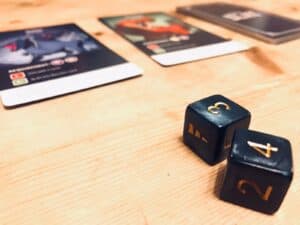
Before you begin playing Here to Slay, keep the overall objective in mind.
In Here to Slay – the base game, at least! – there are six hero classes. These are:
- Fighter.
- Ranger.
- Thief.
- Bard.
- Guardian.
- Wizard.
At the start of the game, you’ll receive a Party Leader card. There are six of these – one of each class (which is why the base game is limited to six players). Your Party Leader is basically a guaranteed Hero with an overall effect influencing your team as you play.
Heroes are included in the main deck, along with Item, Modifier, Challenge, and Magic cards. These will all be shuffled together and drawn each turn randomly.
The game also contains 15 Monster cards, 6 rules cards, and two 6-sided dice.
The objective of Here to Slay is to either:
- Slay three monsters.
- End your turn with a ‘full party’ of Heroes (one of each class).
Reaching either of these points means you win. One round with 4 to 6 players usually took us about 30 to 60 minutes, so you might have time for 3 or 4 games in one evening! Two-player rounds might be over in as little as 15 minutes.
Card Types and Their Meanings
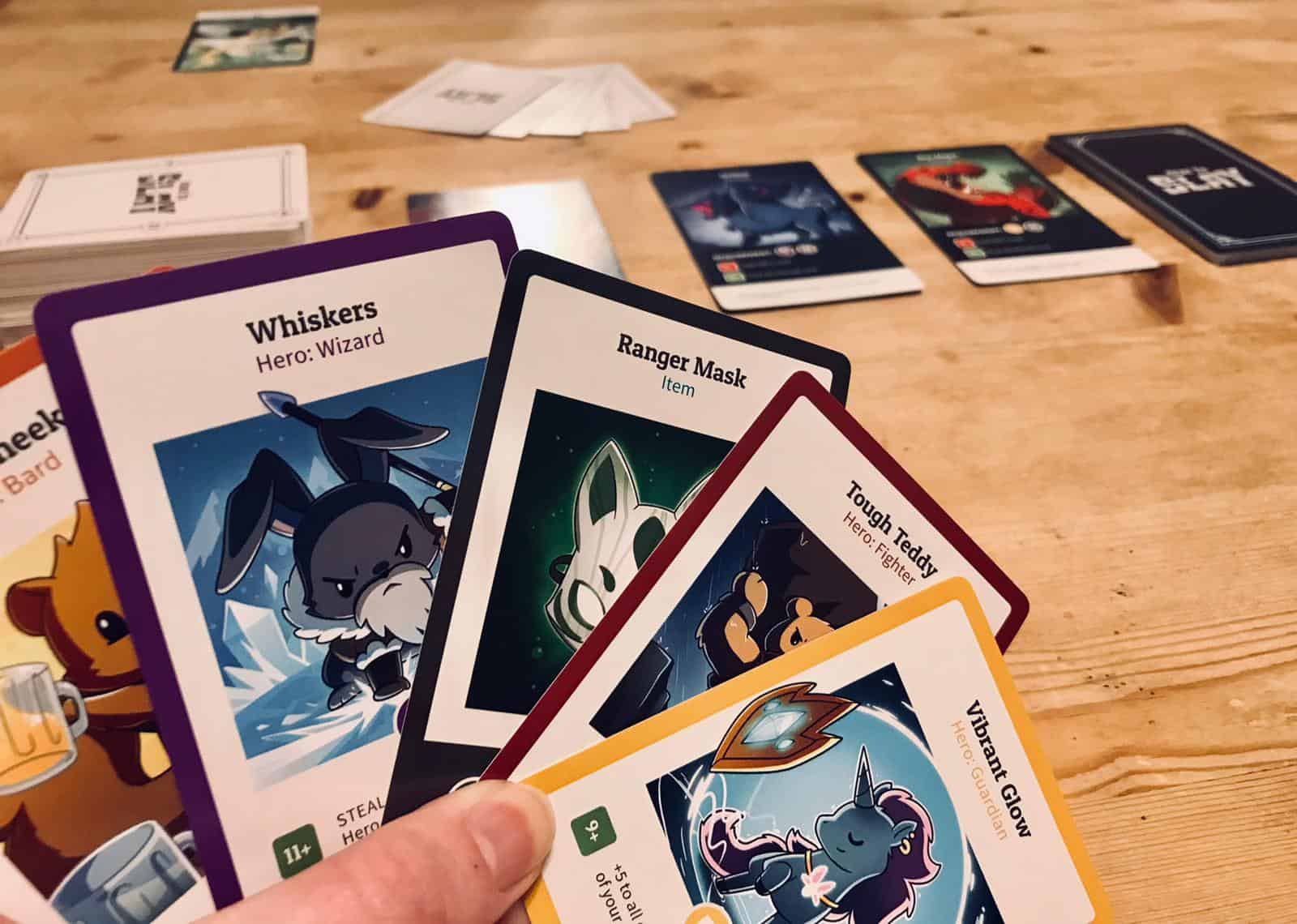
There are 7 card types. You’ll find Hero, Item, Magic, Challenge, and Modifier cards within the main deck. Outside of the main deck, there are also Party Leader and Monster cards.
Hero Cards
Hero Cards form your Party of darling Monster-slaying renegades (along with the Party Leader). All Heroes in the base game fit into one of six classes: fighter, ranger, thief, bard, guardian, or wizard.
Each Hero has a unique, individual power. Read the card carefully before playing it or using its ability again.
You can win the game by assembling a Hero team with a member from each class. However, be wary of other players trying to kill your little soldiers before they even have a chance.
Item Cards
Items can be attached to Heroes. Some have a positive effect, while others reduce that Hero’s effectiveness. Positive Items should be played on your own Party and those with adverse effects on the Heroes belonging to other players.
To play an Item card, slide it underneath the relevant Hero (not too far, so you can still see it’s there). It’s now attached to that Party member (unless affected by another player’s move). If the Hero is returned to your hand, stolen, or killed, the Item goes with it.
Each Hero can have a maximum of one Item card attached (unless specified otherwise).
Magic Cards
Magic cards can be very powerful. They’re immediately discarded when played but can have a powerful effect on the overall game. They’re well worth keeping until the opportune moment.
Challenge Cards
Challenge cards are used by opponents to stop players from playing a Hero, Item, or Magic card. They must be played immediately after the player’s initial move to place their card. You can’t challenge a Challenge or Modifier card or a dice roll.
If someone plays a Challenge card, both players roll the two dice each. Modifiers can then be used to affect the rolls, if you have relevant cards in your hand. The player with the highest overall number wins. If there’s a tie, the challenger wins automatically.
If the challenger wins, the Hero, Item, or Magic card must be immediately discarded, the player having lost 1 of their action points. If the player being challenged wins, they continue as they were. Nobody can challenge that move again (so make sure you get it right the first time!).
Discard the Challenge card after use (whether successful or not).
Modifier Card
Modifiers are a sort of bonus to a dice roll. They increase or decrease the numbers, depending on what you need. You can play Modifiers on your own rolls and those of your opponents.
For example, you might play a Modifier card to win a challenge or prevent an opponent from slaying a Monster or using their Hero’s effect. Any player can play as many as they like at any point – it doesn’t have to be their turn.
Like Magic and Challenge cards, they’re discarded as they’re played.
Monsters
One way to win the game is by slaying three Monsters. Attacking a Monster is inherently risky and always prone to sabotage by your fellow players. However, each conquered card will bring additional influences to your Party, making it easier to win.
The rules for attacking a Monster are different for each one and described specifically on each card.
Party Leaders
You’ll immediately notice these cards due to their larger sizes and lighter backs. Party Leaders, as selected at the beginning of the game, will be an enduring influence as you go forward. They aren’t, of course, too overpowered, but you should try to build your team around them if possible.
There is one Party Leader for each class, and they’ll remain in your hand as an invincible rock for the duration of the game. They can’t be killed, stolen, or sacrificed.
How to Play

Set up the table by placing the following piles in the center: Party Leaders, main deck, Monsters, and the two dice. Leave space for the discard pile somewhere too.
Here to Slay begins with each player choosing their Party Leader card after you roll to determine who gets the first choice. Place the Party Leader in front of you on the table. In more recent times, we’ve taken to assigning them randomly. Do it however seems best to you.
Next, hand each player a Rules card – everyone needs to know how to play, and an occasional reminder is always helpful. After this, deal out five cards from the shuffled main deck to each player. This is your hand, to be kept hidden from everyone else. Finally, turn over the top three Monster cards. These are the enemies available for slaying. You’re now ready to begin.
Playing Here to Slay (base game)
Whoever picked their Party Leader last goes first. Each turn, a player gets 3 action points to spend however they see fit. They could use less than 3 if they wished, but I can’t think of many situations where this would make sense tactically. Different actions cost varying amounts of points:
- 1 action point – use a Hero’s ability (max. once per turn), draw a card from the main deck, or play a card from your hand.
- 2 action points – attack a Monster.
- 3 action points – discard your entire hand and draw 5 new cards. (This, of course, immediately ends your turn.)
At this stage, note that every card is different. It’s easy to get distracted by the adorably violent faces and poses displayed on the Heroes, but you’ll see that each has a unique special ability. Although some might seem more useless than others (remember Napping Nibbles, those who have played before?), they all have their place and purpose. Even the strangest can be used as part of effective, tactical moves.
Heroes and Items should be placed immediately in front of you, next to your Party Leader. Modifiers, Challenges, and Magic cards are one-time wonders and, as such, must be immediately discarded.
Attacking a Monster
When choosing to attack a Monster, balance up the risk and reward. You’ll need a certain number of Heroes (usually of specific classes) to commence the attack. Party Leaders count towards Monster class requirements, but they don’t count as a generic Hero.
For example, attacking Mega Slime requires four generic Heroes. If you have a Party Leader and three other Heroes on the table, you aren’t eligible to attack. However, Titan Wyvern must be attacked by a fighter and a generic Hero. If you have The First of Reason (Fighter party leader) and any other Hero card, you may attack it.
The results are settled by rolling the dice and any following Modifier cards. Beware of attacking Monsters since low rolls or aggressive opponents can cause your assault to fail. The consequence? A Hero must often be sacrificed. Brutal, but all’s fair in love and war.
Ending the Game
Thus the game continues, with players constantly trying to sabotage each other, protect their parties from others, and slay Monsters while they’re at it. As I mentioned in the introduction, the winner is the first person to either kill three Monsters or collect a Full Party – that is, have at least one Hero of all six classes in your Party.
Things You Learn as You Play More
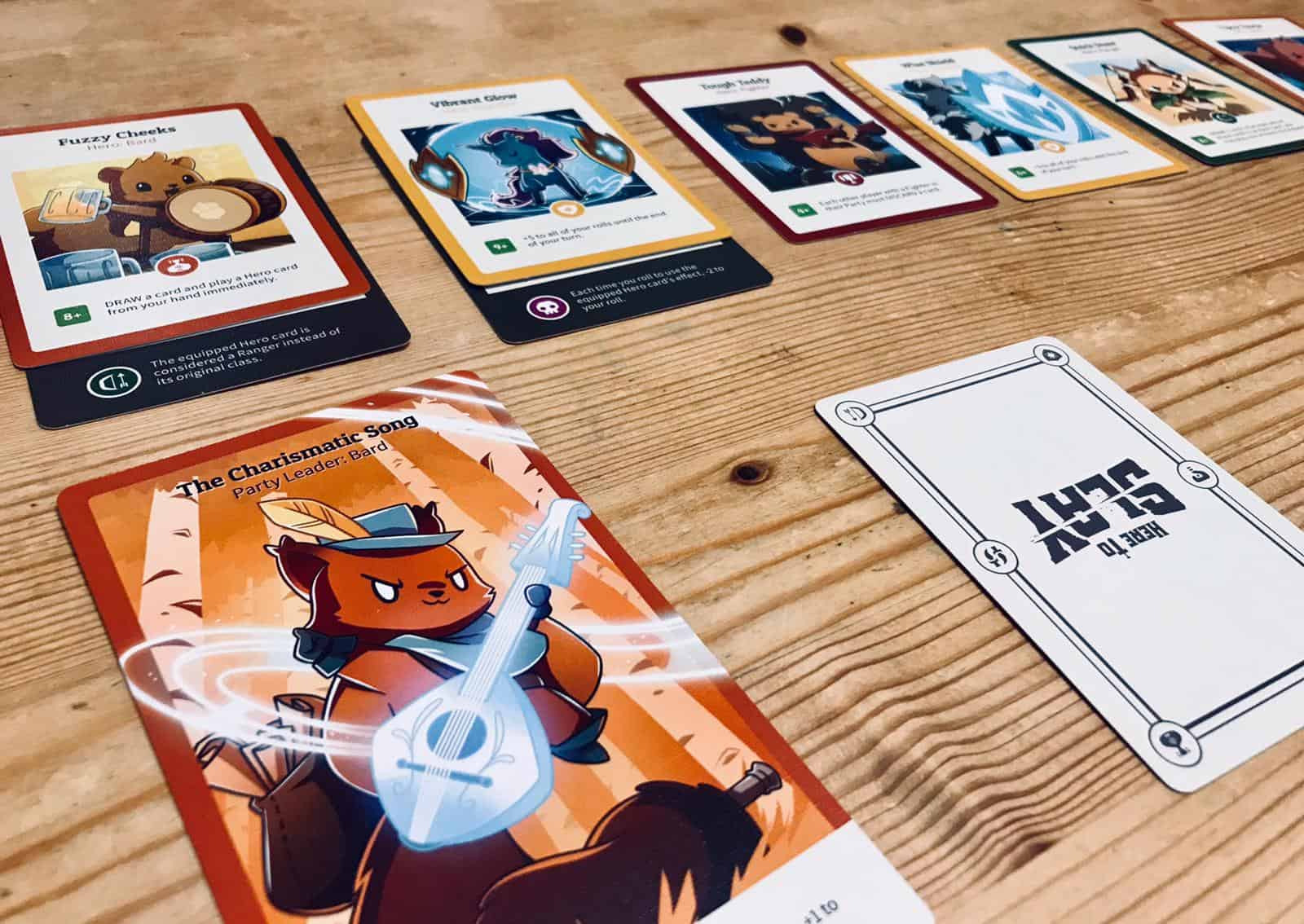
I’ve listed a few things I learned the more we played in this section.
- Protect your Heroes – Items, Magic cards, and the abilities of Heroes, Party Leaders, and slain Monsters can all contribute to security. In my opinion, the best way to win is to start by building your defenses and then slotting in some brutally efficient, murderous cuddly friends.
- The best time to attack a Monster is when other players have limited cards in their hands, reducing the likelihood of negative Modifiers being played. It’s also generally a good safeguard to have a couple of Modifiers of your own in your hand, just in case. Of course, these rules fly out the window in a high-risk scenario. However, if you see an opportunity (usually in the early-to-mid stage of the game) where players have played most of their current cards, why not capitalize on it?
- Always keep an eye on opponents’ cards. Remember, if they have three different classes on the table already (which could be a Party Leader and just two Heroes), they could have the others in their hand. If nobody has any Challenge cards, they could go from hardly any cards to winning in one move.
- In the same vein, don’t keep too many cards in your hand. Doing so looks attractive to other players who might play a relevant card to switch hands with you, destroying all your preparation work.
- Heartbreakingly, many of your cuddly Heroes will be killed or have to sacrifice themselves in the name of victory. As silly as it might sound to someone who hasn’t yet played, your most significant obstacle is probably the distraction and bias caused by your favorite warriors. There’s a very real risk of neglecting tactical advantages to protect individuals. While this might make you feel better, it’s tough to win this way.
- Here’s my most important tip of all: be the ‘gray man’. This phrase refers to blending in with everything around you and making yourself appear irrelevant. As a result, you go unnoticed. That doesn’t mean you should be doing nothing – but take it slowly. Don’t paint yourself as overly aggressive or rush ahead of other players by playing lots of Heroes straight away – your opponents will all target you, and your strategy will be over before it’s begun. By slowly building up your Party, card by card, you’ll build a stronger team that complements each other well. The time for aggression comes in the game’s closing stages, where it might become necessary to play more savagely.
Long-Term Goals to Consider

A unique aspect of Here to Slay is that you can regularly switch tactics. So much can change in one round of moves that the table, your Party, and your hand could be completely different from one turn to the next. That’s why it’s crucial to build a solid protective network.
Because there are two ways to win, it’s often tempting to half-heartedly aim for both. Sometimes, this works. However, it’s usually best to focus on one or the other and change it if the situation demands it.
For example, building a Party of Heroes of the same class is generally much stronger, both aggressively and defensively. This puts you in a much better position to fend off attacks from other players. However, it’s hard to slay Monsters since most need to be attacked by specific classes. It can also take a long time to set up and might give other players a chance to strike you – or maybe even win – before you’re at full strength.
With varied Hero classes, you’ll build up your team much faster. That being said, they won’t be so cohesive, and playing Hero cards too early might open you up to attacks from other players. It should be a little easier to attack Monsters, though, and these Monsters could come with their own abilities to assist you.
You can see that both techniques have opposing strengths and weaknesses. Overall, I’d recommend choosing a strategy after you know your Party Leader and the first three Monsters. Inevitably, the situation will evolve as the game continues. It might well make sense to switch strategies multiple times through the game.
Expansions
The Kickstarter Exclusive version (also called the Deluxe) comes with a few unique cards, along with a whole array of other goodies and merchandise. For this reason, it’s sort of an expansion. I haven’t included it with the others (below) because it’s its own thing.
The Here to Slay KS Exclusive edition is a brilliant gift idea – if you have a spare $250.
There are now several expansion packs for Here to Slay:
- Warriors and Druids
- Berserkers and Necromancers
- Here to Sleigh
- Dragon Sorcerers
- Monster Expansion
Most are cheapest on Amazon. Dedicated board game suppliers seem to struggle to keep up with demand and are often out of stock, in my experience.
One of the best things about Here to Slay is that it’s possible to combine expansions. We haven’t gone any further than playing with the base game, Warriors and Druids, and Berserkers and Necromancers, though. Dragon Sorcerers and Monster Expansion could both technically also be added, if you have them. Here to Sleigh is more of a standalone thing.
If you decide to play with Warriors and Druids and Berserkers and Necromancers simultaneously, I recommend the following modifications. These are how we play so the game stays fair.
- To win, players must have one of eight different Hero classes or slay three Monsters. It’s easier to kill Monsters with all the expansions in play, but there are generally also more people fighting you. As a result, these balance out.
- Consider introducing a hand limit to prevent utter carnage (unless that’s what you want). I recommend about seven if you’re going to go down this path. We don’t play with a hand limit because, to us, the indiscriminate havoc is all part of it.
Warriors and Druids
The Warriors and Druids expansion includes 31 main deck cards (including the Warrior and Druid heroes, of course), 2 Party Leaders (one for each class), and 2 new Monsters to slay. With these new cards, you can play with up to eight people. Things get a little crazy!
We’ve enjoyed using the new classes and cards and would probably consider it the best. If you’re going to buy any, I’d recommend this one.
Berserkers and Necromancers
We’ve also got our hands on the Berserkers and Necromancers expansion pack. It’s a very similar format to Warriors and Druids, coming with 31 main deck cards, 2 Party Leaders, and 2 new Monsters.
Berserkers and Necromancers is still pretty good, but we’ve found the Berserkers tricky to play with. The Heroes can be used to make a dramatic sudden impact, but The Raging Manticore (the Party Leader) is rather useless. In contrast, the Necromancers are a finely tuned selection of endearing dog sorcerers, much loved by my fiancée.
Use Berserkers and Necromancers alongside the standard game to play with up to eight people.
Here to Sleigh
Ah. Punderful.
The Here to Sleigh Christmas expansion pack completely changes the way you’ll play. With these in the mix, the aim of the game is gift giving and receiving, rather than anything else.
We immensely enjoyed playing this alternative mode, first cracking it out and learning to play in an Israeli youth hostel, surrounded by captivated (and drunk) travellers. Perhaps that experience has stuck with me just as much as the game itself!
While this one is great, you do need more table space than usual – so you know. And it’s not like the base version of Here to Slay is a concise game.
Dragon Sorcerers
This one we don’t have, simply because, “WOW! It’s expensive”. It’s an exclusive Here to Slay expansion pack, bringing a new Hero class and Party Leader, Monster, and other main deck cards to the fray.
Dragon Sorcerers looks interesting and if the price comes down, I’d be happy to add it to our collection. But, at the time of writing, $180 simply isn’t worth it to me. Then again, if you’re a collector or desperate for Christmas present ideas, why not?
I’d recommend looking for preowned versions on eBay and Amazon. You should also check Board Game Geek for listings. They don’t come up too often, just so you know.
Monster Expansion
Monster Expansion is just what it sounds like. It includes 13 Monster cards for adding to your collection.
Again, this seems to be an exclusive expansion. I’ve only managed to find one example online, on Amazon.
It looks like a lot of fun, but it’s not worth $160. Not to me, at least. You might think differently!
2v2 Rules
There’s a little-known 2v2 version of Here to Slay, released by the Here to Slay creators in a project update in August 2020. Although you need to remove some cards from the decks to play, it’s great fun.
Here’s what to do when you play with the standard deck. You could also use some of the exclusive expansions, but I’d recommend playing with the base version to keep things a little simpler.
- Remove all the Mask Item cards. Also, take Mega Slime out of the Monster deck.
- Sit in your pairs, next to your teammate. The other two will sit across the table from you.
- Turn-taking works as follows. Let’s say you go first. The next player will be your opponent opposite you. After them, it’s your teammate, and then finally the other rival player. Then it’s back to you, and so on.
- The standard Here to Slay rules now apply, with a couple of exceptions.
- There’s now a party limit of five Heroes. If you already have five and want to add another, you’ll have to discard one. You can’t use this to force other players to discard Heroes.
- You can also add Heroes to your teammate’s party (provided they have four or fewer cards already down), spending 1 action point. However, you can’t activate the effect on your turn.
- You can’t trade hands with your teammate.
- When you play something that allows you to pull a card/cards from another player or players, you can only apply this to your opponents. You can’t take cards from your teammate.
- Monster hunting is where it really gets interesting. When you attack a Monster, you’ll use the combined parties of you and your teammate. However, the teammate’s Party Leader doesn’t count. You must also both verbally agree to attack. If it fails, both players pay the penalty on the Monster card. For example, “Sacrifice a Hero card” means both players must discard a fluffy warrior. Nooo…
- You can still attack Monsters with your own party alone, if necessary. In that case, only you will pay the relevant penalty.
- Party Leader and Monster effects only apply to your party – not your teammate’s.
The last rule change to mention is the criteria change for winning. Your team needs to aim for one of the following:
- Collect 10 Hero cards (of any class) between you – that is, two parties of five.
- Slay five Monsters between you.
There are many different tactics and approaches here. It’s actually even more variable than the standard game, because your team’s overall party (if you want to think of it that way) has so much potential.
Creating Your Own Heroes
Here to Slay comes with an additional epic feature that really makes it stand out against many competitors: the ability to design, print, and use your own Party Leader cards. Just be aware of throwing off the careful balance of the game by introducing cards that are too powerful/not powerful enough.
To create your own professional Party Leader cards, head on over to the Unstable Games website. I’ve included a link here. You’ll find a vast community library of pre-designed cards perfect for using yourself. More interestingly, you can create your own with a massive library of options to choose from. Click on “Create Your Own” and let the magic begin.

When you create your own card, you’re free to do whatever you want. I’d suggest sticking to the original Party Leader effects, so you don’t throw anything too out of balance. Nevertheless, if you want an OP card… why not?
Once you have a Party Leader you’re satisfied with, simply download it and print it off. In my opinion, it’s worth getting them printed by a trusted printing company somewhere near you. However, you could use your printer at home and then either laminate them or place them in official Here to Slay oversized sleeves.
As a quick example to show how simple it is to design a professional-looking card, I used Unstable Games’ easy-to-use program to create a Fighter Party Leader. I named this enchanting little executioner Gerald the Ginormous Rhino.
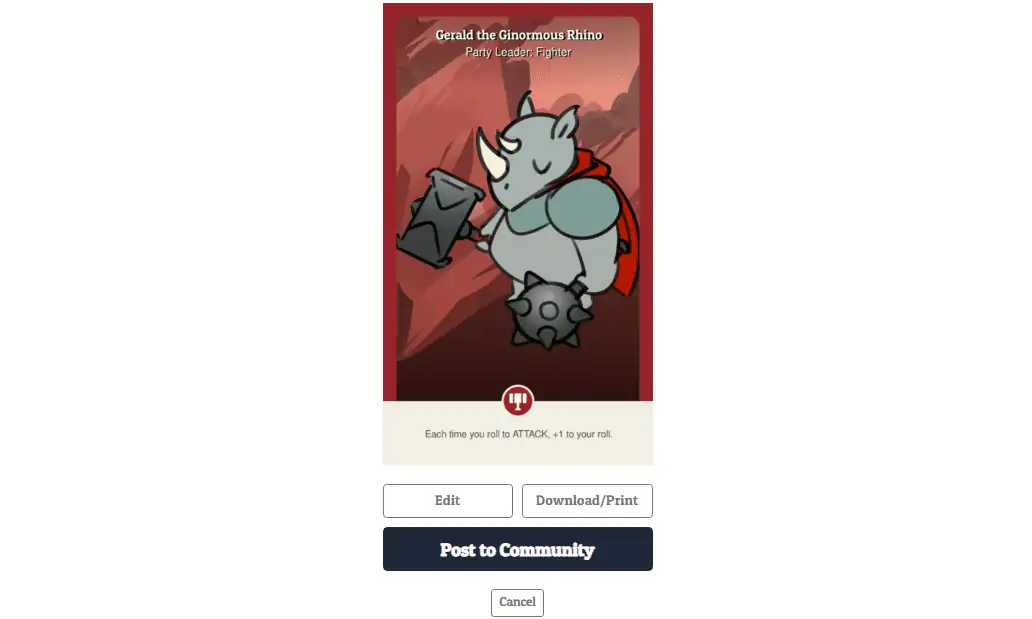
You can find that card online here if you like.
Conclusion
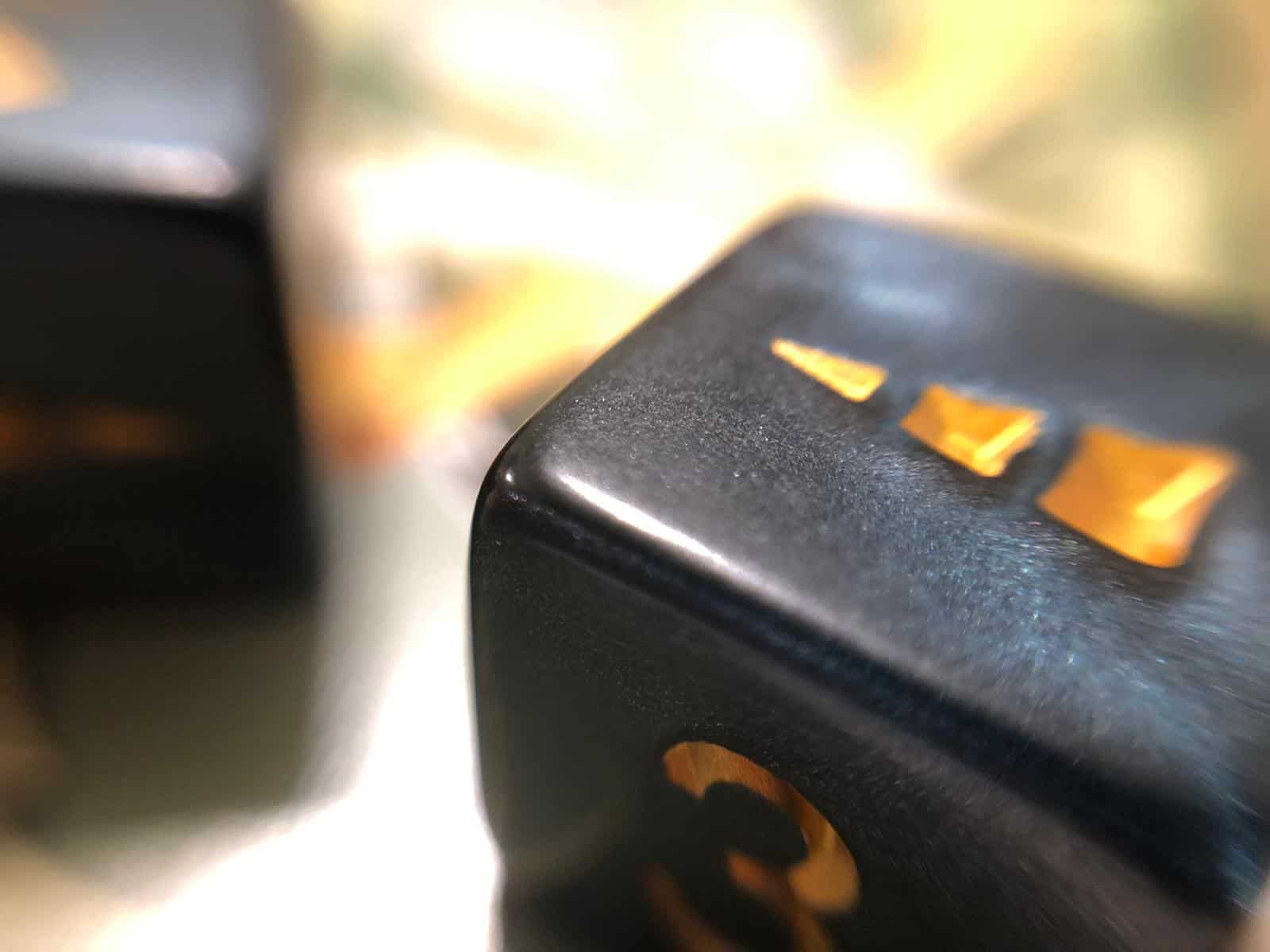
The best way to sum up Here to Slay is that it’s genuine fun for all the family. It has something for everyone. Comedic gore, violent smiles, and luck-based strategy. Games with fewer people take less time, and the opposite is also true. Thus, it’s easy to accommodate everyone, casual and competitive players alike.
Here to Slay is one of my top choices as a quick game to pull out no matter your company – if not my top choice. Not everyone loves it, of course. There’s no die-hard guaranteed-you’ll-win strategy, and muchof it centers around the luck of the dice. But you can certainly play the odds, using the cards you have available to your full advantage.
I’ve also spent far too much time browsing through Here to Slay merch. It’s best to go straight to Unstable Games for this. You’ll also find a large selection of helpful game add-ons, such as individual dice, card sleeves, and game mats. I recommend all of these for enhancing your experience even further.
Overall, I can’t recommend playing it enough. You can find Here to Slay online at Unstable Games’ website or, like me, pick it up in your local Walmart. I’m sure it’ll bring you and whoever you play with many hours of real laughs without making you hate each other – and when it comes to board and card games, that’s always fairly significant!
FAQs
Question: Is there a hand limit in Here to Slay?
Answer: Officially, there is no hand limit. You can hoard cards and throw them all out in one go. It can be important to play heroes that affect your opponents’ hands for maximum disruption.
Alternatively, a popular house rule is to introduce a seven-card limit. At the end of a turn, you can have a maximum of seven cards in your hand. If you have more than this, you must discard cards until you reach seven again. Play then continues.
This can help balance the game out a little and keep everyone’s focus on the table.
I’ve found playing with no limit introduces more variable games and thus I prefer it.
Question: Can you double Challenge in Here to Slay?
Answer: You can’t play a Challenge card on someone else’s. If they place a Challenge card down, you’ll have to roll the dice and see who comes out victorious. Have some Modifiers on hand if it’s a significant one.
Question: Can you play Here to Slay with two people?
Answer: Here to Slay can absolutely be played with two people. It’s designed for anywhere from 2-6 players. 2-player games tend to be more competitive since you can concentrate more intently on your opponent’s moves. It can be just as fun with just the two of you and is particularly great to whip out on a quiet evening in.
Looking for more interesting readings? Check out:
- Terraforming Mars Guide: Fighting for Spaces in Space - April 22, 2023
- Zathura Board Game Guide - April 20, 2023
- Ark Nova Guide – Zoo Complex, Or Complex Zoo? - April 8, 2023

